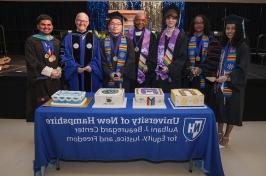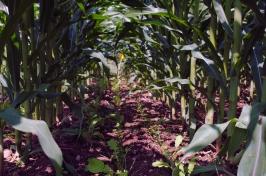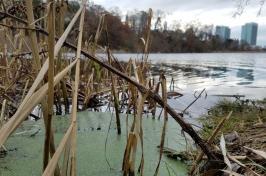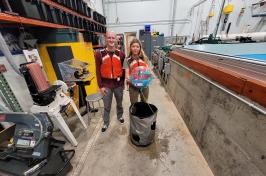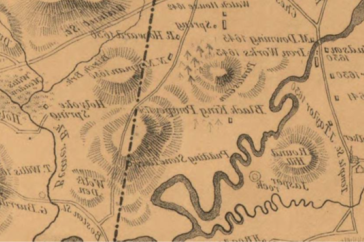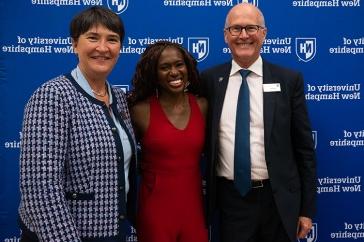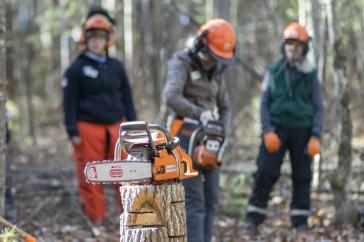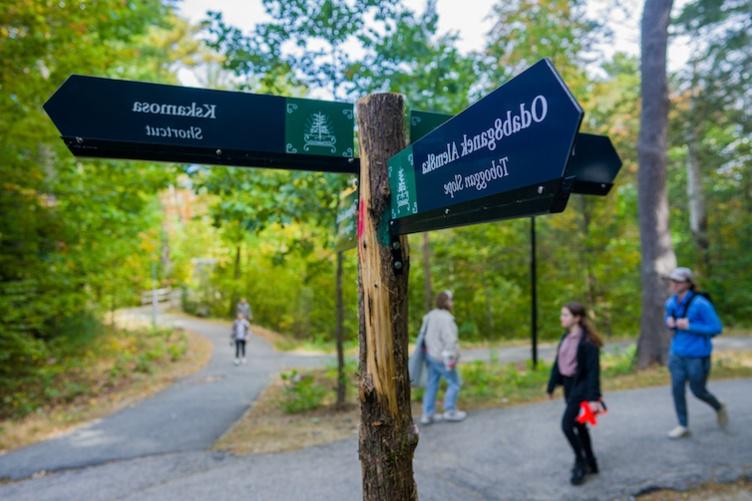
Members of the Indigenous New Hampshire Collaborative Collective (INHCC) – including several from the UNH community – were prepared to make a hard sell to UNH campus architects and planners when they first pitched the idea of naming a series of trails and bridges on campus to honor Abenaki culture and history.
事实证明,他们根本不需要推销.
“我们准备了整个演示,以为我们必须说服他们, 在第二张幻灯片之后他们打断了我们说, 我们喜欢这样,’”亚历山德拉·马丁说, 学院研究员 人类学,协调员 联合国大学的印第安人和土著研究辅修课程 也是国际肝癌协会的成员.
那次会面是在2019年, and a project that has since been met with similar enthusiasm every step of the way officially came to fruition in late September 2022 with the installation of signage. A series of four trails and five bridges in the College Brook Ravine area located behind Hamilton Smith Hall and Dimond Library have been named following traditional Abenaki naming conventions to honor the Indigenous people who first occupied the land on which UNH stands.
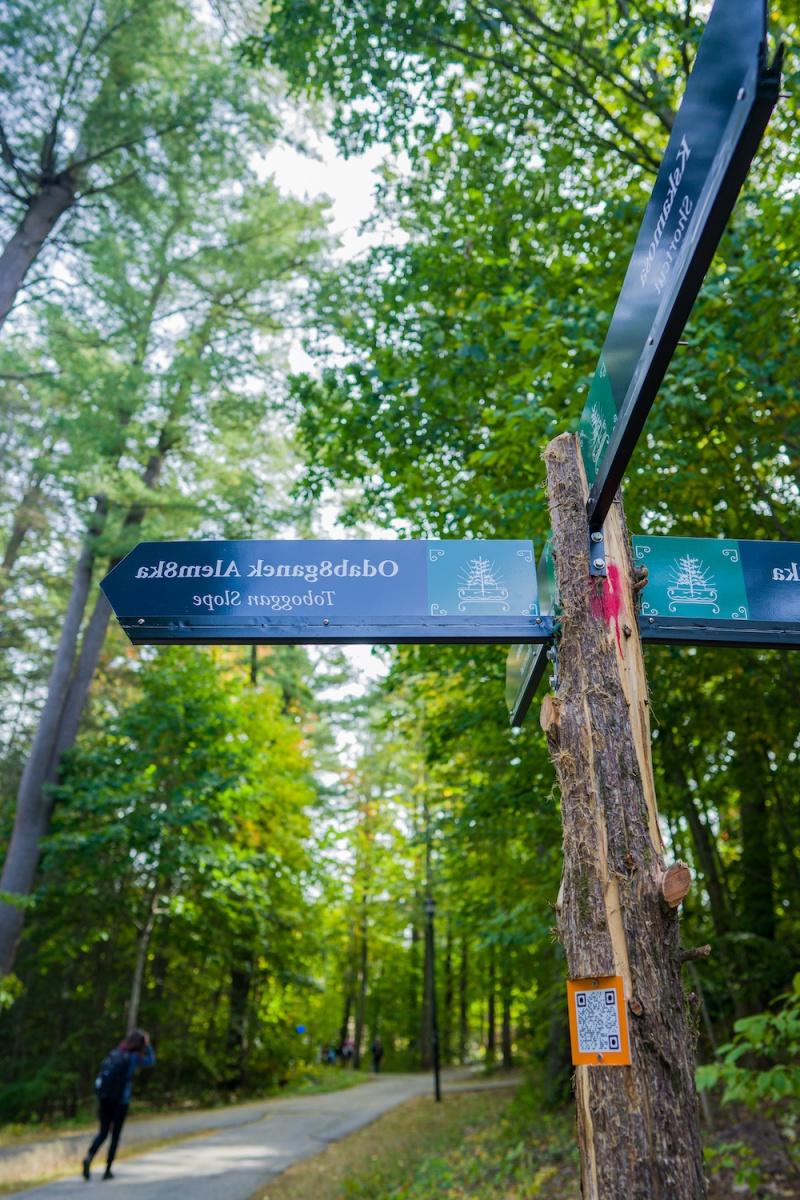
这些小径经常被人来往,但以前没有命名, 不像校园里的其他地方, 哪些名字是为了纪念重要人物而取的.
“命名是联合国大学的重要组成部分. So many buildings and streets and even benches have been named after people,马丁说. “We thought why not bring some recognition to the original inhabitants of this landscape and honor them, 不是作为财政捐助者,而是作为土地的管理者.”
The project began as a collaboration between the INHCC and the Cowasuck Band of the Pennacook-Abenaki People and received support from a wide range of departments across campus. Funding and support for the endeavor were provided by the American Council for Learned Societies, 联合国卫生组织社区办公室, Equity, 和多样性, 联合国大学校长基金, 联合国大学教务长基金, 联合国大学管理办公室和科-霍尔纪念基金的捐赠.
“这个项目提供了一个暂停、反思和学习的机会. 这是一种提高意识的方式,也是对阿本拿基人的永久提醒, 过去和现在, 把联合国大学所在的土地称为家,纳丁·佩蒂说, 负责多元化的副总裁, 公平和包容以及UNH的首席多元化官. “它是土著体验的中心, both in language and in history – it is the very act of ‘centering’ an underrepresented people that makes this project profound and worthy of celebration, and I think it will contribute to the more inclusive campus community we strive toward.”
The trails were selected for the project because they feature several significant landscape features that are important to the Abenaki people, 在部落文化中,过去和现在的水道都是受人尊敬的, 所以这条小溪是天然的风景线, 周围的湿地也是如此(在阿本拿基文化中被称为医药园).
The Cowasuck Band of the Penacook Abenaki People played a critical role in helping select names for the project, 由丹尼斯和保罗·波利奥领导, 乐队的首席男女发言人, respectively – both of whom were instrumental alongside Martin in the creation of the Native American and Indigenous studies minor that was established in 2019.
这些小径被命名为Gweni Wsk8wdik(长径), Kskamosa(快捷方式), Ksakameniganek(短途运输)和Odab8ganek Alem8ka(雪橇斜坡). 这些桥被命名为Skaw8kok(瞭望台), 奥斯卡纳拉格(骨金属), Abaziiya 8wdisizek(木路), namamebaga(荡漾的水)和Seniga Bedegw8gihla(石拱).
"It is the very act of ‘centering’ an underrepresented people that makes this project profound and worthy of celebration, and I think it will contribute to the more inclusive campus community we strive toward."
Abenaki命名惯例通常以物理描述为特征, 保罗·波利奥说, 所以很多名字都包含了建筑材料. 例如,骨金属(Bone Metal)是日本语中表示钢铁的短语.
保罗·波利奥说:“这一切都有利于学生的参与。.
“我们希望这是双方长期合作关系的良好开端.Denise Pouliot补充道, 他指出,今年春天,一个土著花园将被安置在校园里, as well. “我认为学生们能有这种跨文化的经历是很棒的.”
The students involved in the process thus far have agreed with that sentiment, embracing the project. Nicholas Fitzgerald ’21 was a vocal supporter during his time as undergraduate student body president, 还有特洛伊·特洛伊,24岁, 校园结构椅, 自今年夏天首次加入讨论以来,你是否也有过类似的兴奋.
“I think it’s really important to not only be able to honor the culture of the people who have lived here in the past and are still here, 但这也是一种让别人了解阿本拿基人的方式,特洛伊说. “这片土地的历史既是我们的历史,也是殖民者的历史, and I am really glad efforts are being put in place to start to teach people about it.”
除了创造一种尊重土著文化的方式, naming the pathways will also have public safety and wayfinding benefits for the UNH community, 因为这些名字提供了一种明确的方式来描述一个人在该地区的位置, 当小径未命名时,这是一项挑战.
Each trail or bridge name is represented on a signpost – created using cedar extracted from nearby College Woods – featuring both the Abenaki name and the English translation. 还会有一个QR码扫描,这 会把访问者带到网站上吗 featuring historical information as well as audio clips of the traditional Abenaki pronunciations.
当路标在九月底沉入地下时, it represented the culmination of more than three years of hard work by people in numerous departments across campus. Martin was thrilled to see so many UNH community members rally together to honor a different community that first walked the land so long ago.
“It’s really great to see when everyone is working toward a common goal that we all feel excited about, 我们真的可以做到,马丁说.
-
写的:
基斯甲壳 | 主要研究营销 | keith.testa@0933282516.com














